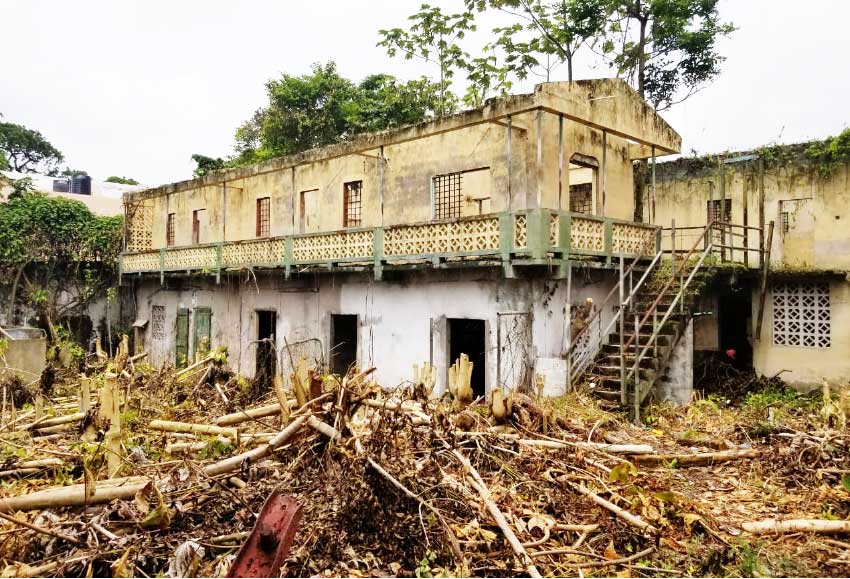AN author once wrote “A bicycle shed is a building; Lincoln Cathedral is a piece of Architecture” What he expressed is that a bicycle shed was not designed with a view to creating a piece of architecture. On the other hand if this bicycle shed belonged to royalty chances are by order it could have been designed to be a piece of architecture and listed in the annals of historical buildings, assuming that the design is unique.
Notwithstanding, the notion that historically significant buildings are static, sacrosanct, untouchable, is not necessarily a view that I personally espouse. I do believe, however, from the standpoint of cultural, artistic, nationalistic and personal history/continuity of information, iconic buildings do relate a story of the time or era they were created and ought to be preserved for posterity. This has been the accepted standard even in this modern age. However, there are instances where historical buildings, where they may be a burden on the owner–public or private, for various reasons—economics, maintenance costs, safety, dysfunctionality, etc, these buildings can be altered, combined with newer structures or even demolished. With the advent of new digital and technological means of reproducing parts of older buildings for posterity (virtually as well as in reality), not to mention photographs, there are many methods of recording such images for posterity.
New Technologies
Today manufacturers can reproduce various skin/cladding compositions in the same material or visual appearance of the antique details for application to new structures when a hint of the old flavor is required. Even 3D-printing of entire modular façades is a reality today.
In many instances old historic buildings which have become dysfunctional can be altered in a more functional manner, with discretion. We have cases in Castries where this can be done such as at SALCC where the longest antiquated building literally bifurcates the campus—not good for security and free flow of pedestrians. Even the fire codes sometimes are violated in these old buildings. It takes creativity of the architect (sometimes the structural engineer as well) to integrate and preserve old while ameliorating functional situations.
There are many strategies that can be employed in integrating old buildings with new. In one proposal (inserted below), not sure if the new is built yet, at Antwerp Belgium, a Port Services building will be or has been placed above an old historic Fire Station, contrasting fully with the old while leaving it intact. There are two schools of thought in this situation—contrasting or blending old with new—depending on the client’s or owner’s brief.
Castries Parliament and Court Buildings
I personally like the curvilinear green balcony bannisters of the historic Parliament and Court buildings in Central Castries. (As a matter of fact I need to go photograph them today). If these buildings have to be demolished due to the reasons hinted above this feature could be echoed in a new building.
Architectural history is not static; modifications can be made to historic buildings—this is the continuum of history—showing how a building has changed at specific points for specific historic reasons coalesce history and present-day reality, making history even more interesting for all.
Majesty’s Prison
The Majesty’s Prison in Castries is another case. If this building is listed with the National Trust a more careful approach ought to be taken in the decision to demolish or alter. The powers of the judicial system can be honoured or challenged in the courts, however, if just reasons can be put forth.
The Issue of Open Space vs. Buildings
Pedestrianizing a city center at a key focal axis, in our case a cruciform pattern if the William Peter Blvd. is included is not a bad idea but a total comprehensive masterplan needs to be formulated so as to show the city center total development concept vision. We need to look at all the issues– the waterfront, sea rise, climate change, parking, bus terminals, guest/touristic facilities, internet cafes, CDC buildings–some structurally unsound, shops, restaurants, pedestrian walkways, plazas, etc. Castries is a particularly humid city. Any form of greenery is welcome. In some cases new buildings can literally be elevated on columns above open spaces to permit light, flow of breeze, protection from elements, visual contact, security, parking spaces, vendor stands, etc. Building heights can be increased as well. As city centre land is limited creative ways must be sought to marry open and built space. Since Castries is almost at sea level we don’t have the option to place commercial or institutional spaces below grade as is practiced in some cities, but with proper foundations building heights can be increased.
In the case of parking in the centre city, permit me to get off the subject of historic buildings, parking meters are ok but the proposed cost mentioned seem to be higher than cost of parking in the carpark which is ironically safer and protects cars from the elements.
In closing, I do hope that the powers-that-be realize that there are local professionals like myself that can make a positive impact on the development programme of the city.






